|
Older Updates
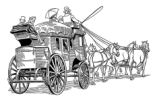 In 1789, the Pocklington Diligence Stagecoach ran from Hull through Beverley and Pocklington and on to the Black Swan Inn in Coney Street in York. A Diligence Stagecoach was usually four horses pulling a single or multi-compartment coach and often known as a "Dilly". In 1789, the Pocklington Diligence Stagecoach ran from Hull through Beverley and Pocklington and on to the Black Swan Inn in Coney Street in York. A Diligence Stagecoach was usually four horses pulling a single or multi-compartment coach and often known as a "Dilly".
 Mary Dewsberry was a prominant lady in the early 19th Century. She was a businesswoman and a philanthropist for the town. John Nottingham has written a biography as she has links to his family history. The image here is Watson's drawing of her house in Union Street called Dewsberry house, now long since gone. Mary Dewsberry was a prominant lady in the early 19th Century. She was a businesswoman and a philanthropist for the town. John Nottingham has written a biography as she has links to his family history. The image here is Watson's drawing of her house in Union Street called Dewsberry house, now long since gone.
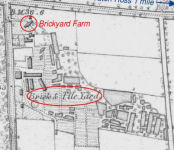 Brickmaking in the Pocklington area has been researched by John Nottingham and his previous research (previously published on this website) has been significantly enhanced. Brickmaking in the Pocklington area has been researched by John Nottingham and his previous research (previously published on this website) has been significantly enhanced.
If you have anything to add on Brickmaking please contact us. We always welcome articles for publication on this website. Have a go, and you will find it quite rewarding to do.
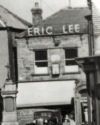 Eric Lee closes after 83 years and we record the part played by the business in the development of the town. Eric Lee closes after 83 years and we record the part played by the business in the development of the town.
Please send us your memories of the electrical business which provided employment to so many in the town.
 The Manor Court Call Roll transcribed by Heidi Woodhouse for 1793 to 1803. See if your ancesters attended the call to the Manor Court of Robert Denison Esq. Lord of the Manor. The Manor Court Call Roll transcribed by Heidi Woodhouse for 1793 to 1803. See if your ancesters attended the call to the Manor Court of Robert Denison Esq. Lord of the Manor.
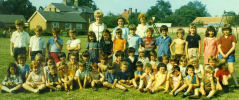 Chapmangate Nursery in the 1970's kindly provided by Beverley Croft. Chapmangate Nursery in the 1970's kindly provided by Beverley Croft.
Please let us know the names if you can.
.jpg) A history of Beacon Lodge has been written by Nigel Glew. The Masonic Hall was built at No. 8, The Mile in 1928 by a number of founding members including Wycliffe Galand Everingham, Francis Scaife and George Arthur Reed. A history of Beacon Lodge has been written by Nigel Glew. The Masonic Hall was built at No. 8, The Mile in 1928 by a number of founding members including Wycliffe Galand Everingham, Francis Scaife and George Arthur Reed.
 An autobiography has been discovered of the early life of Herbert Johnson who was born and raised in Pocklington. It is thought to be the only surviving copy. It has details of his growing up in the town, meeting the love of his life, working at Allisons, fighting in WW2 in Italy, and post-war life. A unique, fascinating and detailed account, which is now saved for posterity. An autobiography has been discovered of the early life of Herbert Johnson who was born and raised in Pocklington. It is thought to be the only surviving copy. It has details of his growing up in the town, meeting the love of his life, working at Allisons, fighting in WW2 in Italy, and post-war life. A unique, fascinating and detailed account, which is now saved for posterity.
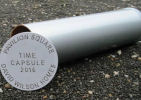 A Time capsule is to be buried at the archeology dig site. David Wilson Homes is to install a time capsule at its Pocklington based housing development, Pavilion Square, where many Iron Age finds have been unearthed. The local house builder is installing the time capsule to celebrate the discoveries at the site of its Pavilion Square development, on Burnby Lane. A Time capsule is to be buried at the archeology dig site. David Wilson Homes is to install a time capsule at its Pocklington based housing development, Pavilion Square, where many Iron Age finds have been unearthed. The local house builder is installing the time capsule to celebrate the discoveries at the site of its Pavilion Square development, on Burnby Lane.
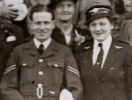 The wedding of Harold Waters to Mabel outside the methodist church in Union Street with members of the Payne family during the war.. The wedding of Harold Waters to Mabel outside the methodist church in Union Street with members of the Payne family during the war..
Please let us know if you can name others in the photograph.
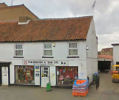 A tutorial on how to use this website to find out the location of the house of your ancestor in Pocklington using the example of Thomas Blanchard. A tutorial on how to use this website to find out the location of the house of your ancestor in Pocklington using the example of Thomas Blanchard.
Thomas was a Fellmonger and operated from the old house now used for English's Pet shop.
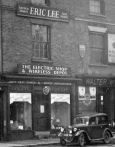 The history of Pocklington electrical supply has been added to the website including information on Eric Lee's electrical business one of the oldest business names still trading in the town. The history of Pocklington electrical supply has been added to the website including information on Eric Lee's electrical business one of the oldest business names still trading in the town.
The electrical supply arrived in the town in 1933 and soon after Eric Lee started his business in the town. This was followed by Fred Kirk and other businesses to supply televisions and electrical goods.
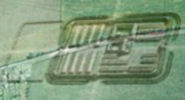 On 11th December 2015 in Hayton village hall, Dr Peter Halkon, Professor Martin Millett and Dr Helen Woodhouse launched their book about the long term project to excavate and study the Roman Fort found at Hayton. Information on their book can be found here. On 11th December 2015 in Hayton village hall, Dr Peter Halkon, Professor Martin Millett and Dr Helen Woodhouse launched their book about the long term project to excavate and study the Roman Fort found at Hayton. Information on their book can be found here.
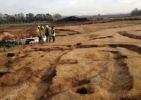 The newspaper report of the Burnby Lane Iron Age Site states that the site has so far yielded 156 skeletons and 76 square barrows. The newspaper report of the Burnby Lane Iron Age Site states that the site has so far yielded 156 skeletons and 76 square barrows.
 Voices from the past - Recently discovered recordings of WW1 veterans were found by the York Oral History Society. Five local veterans recorded in 1980/81 by Alf Peacock were played back at a recent meeting of the Pocklington and District Local History Group together with pictures and film. Voices from the past - Recently discovered recordings of WW1 veterans were found by the York Oral History Society. Five local veterans recorded in 1980/81 by Alf Peacock were played back at a recent meeting of the Pocklington and District Local History Group together with pictures and film.
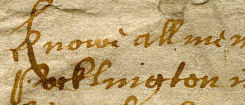 An old document of 1559 was found on an online auction site of William Plaxton of Pocklington. It is probably linked to a later document of 1585 of Thomas Plaxton and also available to view on this site. An old document of 1559 was found on an online auction site of William Plaxton of Pocklington. It is probably linked to a later document of 1585 of Thomas Plaxton and also available to view on this site.
 The story of families of emigrants from Pocklington founding a community in Detroit, Michigan in the United States of America. The families included Vaux, Lamb and Lee. The story of families of emigrants from Pocklington founding a community in Detroit, Michigan in the United States of America. The families included Vaux, Lamb and Lee.
Picture left is James "Boss" Vokes who emigrated from Pocklington in 1843 to Detroit, Michigan, USA. If you have any information on the Leesville settlers please contact us.
 Can you identify?? ... A new page has been added for photographs we have difficulty in identifying the place, the names of the people, or the date it was taken. Please contact us if you can help. Can you identify?? ... A new page has been added for photographs we have difficulty in identifying the place, the names of the people, or the date it was taken. Please contact us if you can help.
* Latest Update - one photo has been identified !
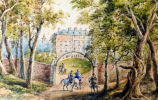 A superbly researched and referenced article has been kindly provided for publication on this website by Andrew Rose on the Rudston family of Hayton and Allerthorpe. This family were a most prominant family in the area with links going back to the 1100's. A superbly researched and referenced article has been kindly provided for publication on this website by Andrew Rose on the Rudston family of Hayton and Allerthorpe. This family were a most prominant family in the area with links going back to the 1100's.
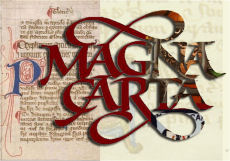 While the 800th anniversary of Magna Carta was recently celebrated on both sides of the Atlantic by a series of major events and extensive media coverage, Pocklington & District Local History Group focussed on the numerous local links to ‘The Great Charter’ at its June meeting. Read about Pocklington links to the Magna Carta. While the 800th anniversary of Magna Carta was recently celebrated on both sides of the Atlantic by a series of major events and extensive media coverage, Pocklington & District Local History Group focussed on the numerous local links to ‘The Great Charter’ at its June meeting. Read about Pocklington links to the Magna Carta.
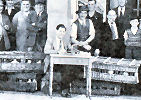 Pocklington has always had a good Pigeon Racing group. They would send their pigeons on the train from Pocklington Station. Pocklington has always had a good Pigeon Racing group. They would send their pigeons on the train from Pocklington Station.
Also, Woldgate Catering staff early 1960's and Council School PE 1957/58
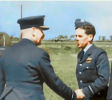 For the 2015 Flying Man history exhibition John Nottingham and Jeff Peck have completed an excellent research project on the history of Pocklington Airfield. It includes new aerial photographs of the construction of the airfield. They have kindly agreed for it to be made available for viewing on this website. Picture on the right is Gus Walker meeting Bomber Harris at Pocklington Airfield. For the 2015 Flying Man history exhibition John Nottingham and Jeff Peck have completed an excellent research project on the history of Pocklington Airfield. It includes new aerial photographs of the construction of the airfield. They have kindly agreed for it to be made available for viewing on this website. Picture on the right is Gus Walker meeting Bomber Harris at Pocklington Airfield.
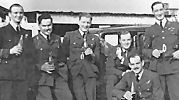 The 8th May 2015, was the 70th anniversary of VE day. Phil Gilbank wrote an article for the Pocklington Post for its commemoration and it is reproduced here. The 8th May 2015, was the 70th anniversary of VE day. Phil Gilbank wrote an article for the Pocklington Post for its commemoration and it is reproduced here.
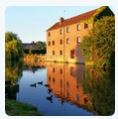 Rachel Walker is Pocklington Canal & River Trust Development Officer. She has been employed to develop an application to the Heritage Lottery Fund for works on the canal, which will include: Rachel Walker is Pocklington Canal & River Trust Development Officer. She has been employed to develop an application to the Heritage Lottery Fund for works on the canal, which will include:
· Works to improve the SSSIs
· Restoration to two of the bridges
· Interpretation of the Canal
· Providing activities, events and opportunities for volunteers to get involved
If you would like to get involved in the project please contact Rachel via her Facebook page and take part in her survey by visiting this link
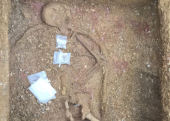 A skeleton of a warrior buried with his shield has been found at the recently discovered Iron Age Cemetery in Burnby Lane. Over 38 square barrows and over 82 burials have so far been excavated by Paula Ware and her team of archeologists. David Wilson homes are currently constructing 77 new houses on the site.
See the Pocklington Post story here. A skeleton of a warrior buried with his shield has been found at the recently discovered Iron Age Cemetery in Burnby Lane. Over 38 square barrows and over 82 burials have so far been excavated by Paula Ware and her team of archeologists. David Wilson homes are currently constructing 77 new houses on the site.
See the Pocklington Post story here.

Information on the Rennard Family of the Wolds together with an old Tayleure CDV photograph. John Rennard was born in Millington in 1849 and his family were dales farmers.
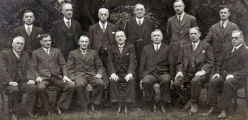 Pocklington Urban District Council taken around 1933 with Alfred Summerson, Herbert Meynell, George Scaife Joseph Butterworth, Sydney Everingham and George William Haw (Chairman). Pocklington Urban District Council taken around 1933 with Alfred Summerson, Herbert Meynell, George Scaife Joseph Butterworth, Sydney Everingham and George William Haw (Chairman).
 The exciting discovery of an Iron Age cemetery in Burnby Lane was presented at a public meeting in Pocklington on the 19th March, 2015. The size and preservation of the site has surprised and amazed the archeologists and the site has been raised to international importance. View the meeting report here. The exciting discovery of an Iron Age cemetery in Burnby Lane was presented at a public meeting in Pocklington on the 19th March, 2015. The size and preservation of the site has surprised and amazed the archeologists and the site has been raised to international importance. View the meeting report here.
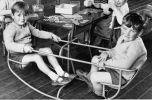 Various photographs of the National School in New Street and the Council School in Kirkland Street. Also a photograph of the National School in 1964. Various photographs of the National School in New Street and the Council School in Kirkland Street. Also a photograph of the National School in 1964.
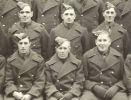 Shiptonthorpe Home Guard no. 5 Platoon met twice a week, Tuesday nights and Sunday mornings in an old WW1 hut in Station Road. It was formed in 1940, and was made up of a section of the East Riding 4th Battalion. Shiptonthorpe Home Guard no. 5 Platoon met twice a week, Tuesday nights and Sunday mornings in an old WW1 hut in Station Road. It was formed in 1940, and was made up of a section of the East Riding 4th Battalion.
 Francis Scaife who died in 1937, was a benefactor for the town providing in his will for the creation of a swimming pool, which opened in 1965 bearing his name. The Scaife family roots go back in Pocklington to at least the seventeeth century and carried out a variety of trades and professions in the town including a large brewery business in New Pavement which closed in 1895. Francis Scaife who died in 1937, was a benefactor for the town providing in his will for the creation of a swimming pool, which opened in 1965 bearing his name. The Scaife family roots go back in Pocklington to at least the seventeeth century and carried out a variety of trades and professions in the town including a large brewery business in New Pavement which closed in 1895.
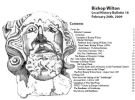 Bishop Wilton Local History Group was active between 2002 - 2012. It produced 20 bulletins of high quality research and information. They can now be purchased online and all revenues will go to Bishop Wilton Church. Visit the list of bulletins in the store. Bishop Wilton Local History Group was active between 2002 - 2012. It produced 20 bulletins of high quality research and information. They can now be purchased online and all revenues will go to Bishop Wilton Church. Visit the list of bulletins in the store.
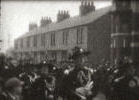 The oldest film of Pocklington is the Memorial Parade of 1932. It shows the Legion of Frontiersmen marching out of the Territorial Drill Hall in Barmby Road, and the cadets and girl guides marching past the railway gatehouse on West Green. The oldest film of Pocklington is the Memorial Parade of 1932. It shows the Legion of Frontiersmen marching out of the Territorial Drill Hall in Barmby Road, and the cadets and girl guides marching past the railway gatehouse on West Green.
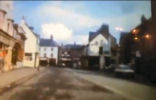 Old Film of Pocklington (n.b. Video now updated) taken in the 1960's has been added to the website thanks to Bob Sissons.. Also, a picture of the National School in the1950's , the Council School in 1953 and a picture of New Farm Chicken Factory in Target Lane. Old Film of Pocklington (n.b. Video now updated) taken in the 1960's has been added to the website thanks to Bob Sissons.. Also, a picture of the National School in the1950's , the Council School in 1953 and a picture of New Farm Chicken Factory in Target Lane.
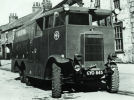 Pocklington Fire Brigade was formed in 1897 following the 'great fire' of 1896. There were mentions of earlier fire fighting facilities in the town prior to this date (see the flax fire report of 1856). The fire station used to be located in George Street until destroyed by a fire in 1966 and then was subsequently moved to its present site next to the bus station. Pocklington Fire Brigade was formed in 1897 following the 'great fire' of 1896. There were mentions of earlier fire fighting facilities in the town prior to this date (see the flax fire report of 1856). The fire station used to be located in George Street until destroyed by a fire in 1966 and then was subsequently moved to its present site next to the bus station.
 Focus on Wilberfoss: Wilberfoss is now added to the District Pages together with The History of Wilberfoss as printed in Bulmers 1892 Directory. Also, a comprehensive article on Wilberfoss Priory written by George Beedham in 1917. A Gallery of old photographs of Wilberfoss. Focus on Wilberfoss: Wilberfoss is now added to the District Pages together with The History of Wilberfoss as printed in Bulmers 1892 Directory. Also, a comprehensive article on Wilberfoss Priory written by George Beedham in 1917. A Gallery of old photographs of Wilberfoss.
 4th August 2014 was the 100th Anniversary of the start of World War One, and to mark the occasion, Pocklington held a re-dedication of the War Memorial. The Pocklington and District Local History Group, in conjunction with the Pocklington Town Council, held an exhibition called 'Fallen Heroes' to commemorate the WW1 dead in early November 2014. Please see our page of Pocklington and District World War One heroes 4th August 2014 was the 100th Anniversary of the start of World War One, and to mark the occasion, Pocklington held a re-dedication of the War Memorial. The Pocklington and District Local History Group, in conjunction with the Pocklington Town Council, held an exhibition called 'Fallen Heroes' to commemorate the WW1 dead in early November 2014. Please see our page of Pocklington and District World War One heroes
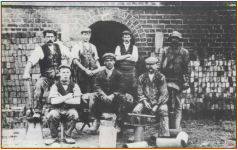
Brickmaking in the Pocklington Area researched and written by John Nottingham, whose ancestors were brick makers. Local brickworks including Pocklington and a large brickworks at Melbourne benefitted from the opening of the Canal to transport the bricks.

Bishop Wilton Local History Group was disbanded in 2012 following the sad news of the untimely death of it's founder, Mike Pratt. Mike created a super website on Bishop Wilton history and the original website has now disappeared from the internet. I have managed to rescue it and have uploaded it to the Pocklington and District Local History Group website to preserve it's valuable information. The Bishop Wilton Local History Group Website.
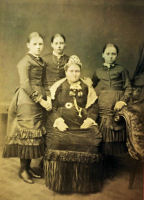 Dating and naming the people in old photographs is often a problem. Sometimes a photograph can ask more questions than provide answers. A case in point is the photograph of Elizabeth Askwith of Greenwick farm, Givendale. She died in 1867 yet a Tayleure photograph from the family shows it stamped in Market Place when Michael Tayleure did not arrive in Pocklington until 1870, and did not operate in Market Place until the 1880's? Dating and naming the people in old photographs is often a problem. Sometimes a photograph can ask more questions than provide answers. A case in point is the photograph of Elizabeth Askwith of Greenwick farm, Givendale. She died in 1867 yet a Tayleure photograph from the family shows it stamped in Market Place when Michael Tayleure did not arrive in Pocklington until 1870, and did not operate in Market Place until the 1880's?
Also, Edward Wilson Askwith of Millington, and a page on the Hutments at the Millington Camp at Ousethorpe.
 Motor Cycling in Pocklington was pioneered by the Everingham family and the Tinson family. Wycliffe Everingham was a Flight Lieutenant, Motor Cycle & Wireless Pioneer and Engineer. Motor Cycling in Pocklington was pioneered by the Everingham family and the Tinson family. Wycliffe Everingham was a Flight Lieutenant, Motor Cycle & Wireless Pioneer and Engineer.
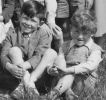 A set of photos has been sent which includes Yapham School around 1952 and Yapham School in 1953-54. A view from top of Yapham Mill and a lambing photo at the top of Givendale. A set of photos has been sent which includes Yapham School around 1952 and Yapham School in 1953-54. A view from top of Yapham Mill and a lambing photo at the top of Givendale.
 Pocklington's part in testing (very) early flying machines and also the early aeroplane landing grounds at Barmby Moor and how they were used in World War One and attacked by German Zeppelins. Pocklington's part in testing (very) early flying machines and also the early aeroplane landing grounds at Barmby Moor and how they were used in World War One and attacked by German Zeppelins.
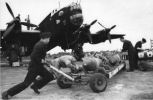 An eye-witness account of Pocklington airfield during the second world war. David Cottrell tells the story of his family who escaped the blitz in London to live in Pocklington and watch the planes taking off and landing on the airfield. An eye-witness account of Pocklington airfield during the second world war. David Cottrell tells the story of his family who escaped the blitz in London to live in Pocklington and watch the planes taking off and landing on the airfield.
 William Watson was a notable son of Seaton Ross. He was a farmer, map-maker, sundial maker, astronomer, musician and diarist. This remarkable man is studied by Malcolm Young. William Watson was a notable son of Seaton Ross. He was a farmer, map-maker, sundial maker, astronomer, musician and diarist. This remarkable man is studied by Malcolm Young.
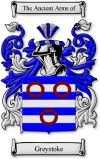 Grimthorpe Manor has a fascinating history. It is the site of an ancient Iron Age Hillfort and where the ancient manor-house of the barons Fitz William of Grimthorpe was situated, the name derives from an Anglo-Danish chief succeeded by William the son of Ulf, the Norman thegne. The Lords of Greystoke lived there for hundreds of years. The old stone Manor house was demolished in 1804 by the Denison family and a brick farm house was built on the site. Grimthorpe Manor has a fascinating history. It is the site of an ancient Iron Age Hillfort and where the ancient manor-house of the barons Fitz William of Grimthorpe was situated, the name derives from an Anglo-Danish chief succeeded by William the son of Ulf, the Norman thegne. The Lords of Greystoke lived there for hundreds of years. The old stone Manor house was demolished in 1804 by the Denison family and a brick farm house was built on the site.
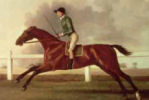 John Singleton was the first professional jockey and was born in Melbourne, near Pocklington. He started at the stable of Wilberforce Read at Grimthorpe. He was later employed by Lord Rockingham for whom he took part in all major races from the early 1760s until 1780. He later settled at Great Givendale where later generations of Singletons lived. John Singleton was the first professional jockey and was born in Melbourne, near Pocklington. He started at the stable of Wilberforce Read at Grimthorpe. He was later employed by Lord Rockingham for whom he took part in all major races from the early 1760s until 1780. He later settled at Great Givendale where later generations of Singletons lived.
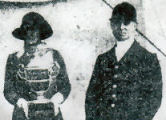 Nunburnholme Point-to-Point Races 1930's and Woldgate School 1962 class and Pocklington Choir photos. Nunburnholme Point-to-Point Races 1930's and Woldgate School 1962 class and Pocklington Choir photos.
 Two photographs of Village Schools. The last class photograph of Yapham School in 1969-70, Two photographs of Village Schools. The last class photograph of Yapham School in 1969-70,
and Fangfoss school in 1974.
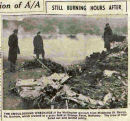 Information and photographs about local aircraft crashes and incidents during the 1939-45 conflict and in the post war years. Information and photographs about local aircraft crashes and incidents during the 1939-45 conflict and in the post war years.
 More school photos. National School 1955 and National School 1956. More names for National School 1957, National School 1958 and National School 1959, new photo of Woldgate 1960. More school photos. National School 1955 and National School 1956. More names for National School 1957, National School 1958 and National School 1959, new photo of Woldgate 1960.
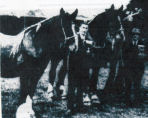
The last Pocklington Agricultural Show was held in 1931 and before 1923 was the Horse and Foal Show.
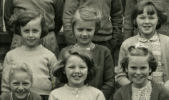 Pocklington C.of E. School Sept. 1954 Pocklington C.of E. School Sept. 1954
With names, but no positions, can you match the names with the faces?
Let us know.
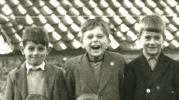
1954 National School photo.
Please let us know the names to the faces.
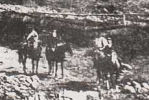
The extraordinary story of convict Jane James, a "Wholesale Plundererer" transported to Australia from Melbourne (near Pocklington), written by one of her descendants.

Jack Huck - Rat Catcher with his Jack Russell Terrier "Mick"
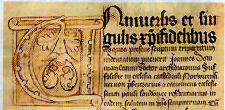 The Pocklington School Foundation Charter and it's story written by Phil Gilbank. The Pocklington School Foundation Charter and it's story written by Phil Gilbank.
 Dr. Kate Giles of York University Archaeology Dept., launches our Autumn programme! Dr. Kate Giles of York University Archaeology Dept., launches our Autumn programme!
'Richard III and the Middleham Jewel'
Stop Press: Dr. Peter Halkon confirms a date in October.
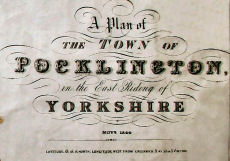
Easton's Directory of Pocklington for 1845 and index to the 1844 Watson map. Transcribed by Roger Bellingham.
 The Silburn family of Pocklington - An important family in Pocklington with the name going back in local parish records for a number of centuries. They have links to the other old established family names of Singleton and Powell. The Silburn family of Pocklington - An important family in Pocklington with the name going back in local parish records for a number of centuries. They have links to the other old established family names of Singleton and Powell.
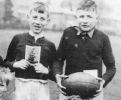 Pocklington National School Rugby in the 1940's Pocklington National School Rugby in the 1940's
What are the boys holding? Does anyone know?
 Pocklington ATC in 1945 and taken at Pocklington Golf Club. Do you recognise anyone? Pocklington ATC in 1945 and taken at Pocklington Golf Club. Do you recognise anyone?
*Latest - more information has been provided on the names.
 Airfield memories of Dick Cains whose father Eric (pictured here) was a miller at Devonshire Mill, and a member of the home guard in 1942. He witnessed some remarkable sights of returning aircraft, the enemy bombing of the town, and became close to the brave crewmen who flew their missions from Pocklington. Airfield memories of Dick Cains whose father Eric (pictured here) was a miller at Devonshire Mill, and a member of the home guard in 1942. He witnessed some remarkable sights of returning aircraft, the enemy bombing of the town, and became close to the brave crewmen who flew their missions from Pocklington.
Hull Daily Mail Oct. 1928 - Historical Mems: A History of Pocklington
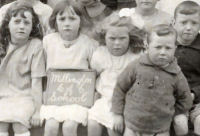
Millington school about 1920.
Do you recognise anyone?
Can you date the photo?
 Adelulf - the forgotton bishop. Pocklington has produced many remarkablechurchmen from Medieval times right up to the 20thcentury, but none can be said to have had the impact of the town’s first known cleric, Adelulf, who was one of the leading 12th century churchmen and politicians on both sides of Hadrian’s Wall during the reign of Henry I. Adelulf - the forgotton bishop. Pocklington has produced many remarkablechurchmen from Medieval times right up to the 20thcentury, but none can be said to have had the impact of the town’s first known cleric, Adelulf, who was one of the leading 12th century churchmen and politicians on both sides of Hadrian’s Wall during the reign of Henry I.

*Parish Register Transcripts*
Roger Bellingham's Dade Register research
Baptisms - 1778 - 1788
Marriages - 1754 - 1802
Burials - 1752 - 1761
*Emigration* - East Yorkshire Emigration fascinating stories.
*Extracts* - The History of Nunburnholme from an article in the Hull Daily Mail in 1929.
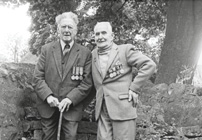 York Oral History Society has a collection of 285 recordings with WW1 veterans conducted in the early 1980s by Dr Alf Peacock. The veterans are from various parts of the country, but predominantly Yorkshire. They are planning to produce a book, exhibition and workshops in schools in 2014, using the material. They are seeking to contact descendants of the veterans in order to copy any photographs they may have, and are happy to give a copy of the relevant recording in return. York Oral History Society has a collection of 285 recordings with WW1 veterans conducted in the early 1980s by Dr Alf Peacock. The veterans are from various parts of the country, but predominantly Yorkshire. They are planning to produce a book, exhibition and workshops in schools in 2014, using the material. They are seeking to contact descendants of the veterans in order to copy any photographs they may have, and are happy to give a copy of the relevant recording in return.
They have the following interviews with Pocklington area men –
George Barker, born 1877 Leeds
Hawksworth Barker (known as Oxy), born 1891
Oscar Bell, born York, November 1892
Thomas Flint, Pocklington, born 13 December, 1885
Bill Harrison, born Nunburnholme 15 July 1898
Arthur Aylett from Allerthorpe
Charles Richardson, born Kirk Deighton, 11 March 1898
Stan Robson, Pocklington, September 1893.
If you have any photographs of the above people then please contact the co-ordinator of the project, on vann@vanalexinamay.freeserve.co.uk.
*New* - Parish Records search. A new page with links for searching Pocklington Parish Records using the batch code feature of the IGI.
Pocklington Airfield memories
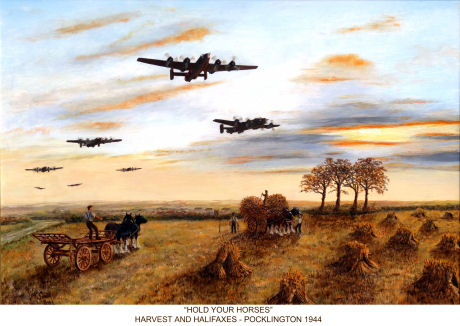
An original painting by Peter Smith depicting his memories of Mk.III Halifax bombers of 102 (Ceylon) Squadron leaving Pocklington airfield to rendezvous with others over the East Yorkshire coast before setting out for a raid over Germany in early September 1944. Read his memories here.
Manor History Research
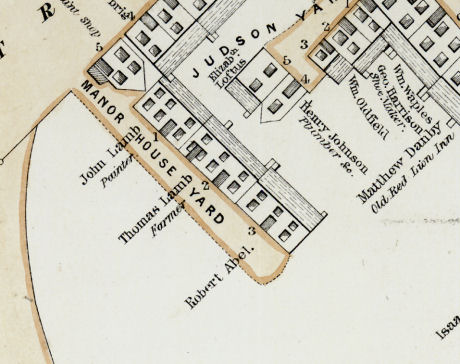
Watson's 1855 Map showing the Manor House Yard in Railway Street.
The PLHG have identified three Manors:-
1. The Royal or Dolman Manor
2. The Dean of York's Manor
3. The Hall Garth Manor
An overview of the Manor Timeline can be viewed here.
Update of Mill Research
White Mill page and the St. Helens gate Mill page.
William Watson's maps on the website
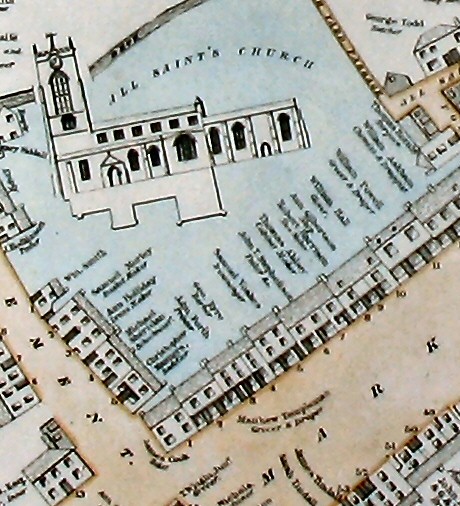
William Watson was a surveyor and mapmaker, who was born in Seaton Ross and lived in Market Weighton and Pocklington. In all the places he lived, he drew maps of, and the 1855 Pocklington map above was the last one he completed.
Archives -> Maps -> 1844Map -> 1844 Map of Pocklington
Archives -> Maps -> 1855Map -> 1855 Map of Pocklington
Pocklington Board of Guardians
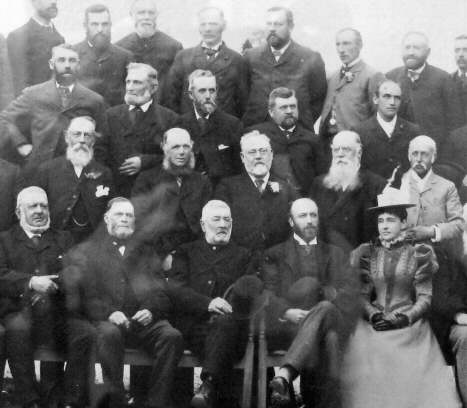
These distinguished ladies and gentlemen are the Pocklington Board of Guardians who looked after the Pocklington workhouse and the Poor of the Parish. A superb surviving photograph, taken in 1897, with all their names can be found in Burnby Hall, or by clicking the link on the next line. (The next line also shows where the index can be found on the Menu system for this site.)
Archives -> People -> Prominent People -> Pocklington Board of Guardians
Pocklington Survey and Valuation for 1824
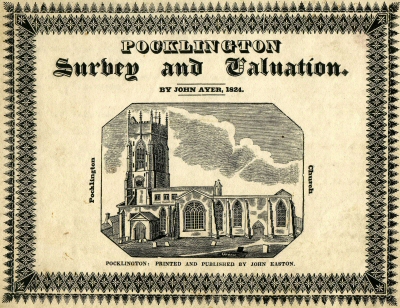
A rare surviving copy was discovered in private ownership and has been typed and posted to the reference section of the Pocklington History website. It is a very valuable and detailed survey of all of the property and land in and around Pocklington in 1824. It mentions there is a plan to go with it, but unfortunately this has not
survived.
Archives -> Reference -> 1824 Survey and Valuation
Pocklington at War
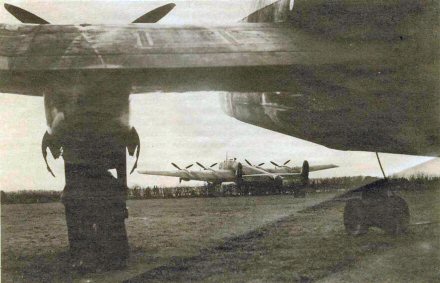
The town of Pocklington was greatly involved in the war effort to defeat Hitler's Germany. A large airfield was constructed in 1941 to the west of the town near to Barmby Moor and initially became the home of the Canadian 405 squadran with Wellington bombers and later the 102 squadran with Halifax bombers. The photograph above show Halifaxes by daylight at Pocklington in 1943.
A new section has been added to the website on World War 2. Choose:
History->20th Century->Pocklington at war->Early Days in Pocklington
History->20th Century->Pocklington at war->Le Creusot Raid
History->20th Century->Pocklington at war->That Fateful night
Pocklington is changing
The pace of change in the town of Pocklington is accelerating, and many old buildings and structures have already disappeared. The memories of residents, and photos of the old town need to be recorded for future generations. Many people around the world have family links with Pocklington and the local villages, and they may seek information that will give them some idea of where their ancestors lived, where they worked, and how they lived their lives. Pocklington History will not only give everyone an oversight as to what life was like in this small market town, but it is set to heavily expand in the near future - almost becoming an archive in itself.
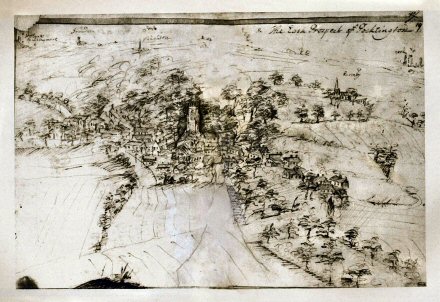
One of the earliest images of Pocklington drawn in 1719 (src: Samuel Buck)
Although the initial content of this website is managed and written by me, I encourage anyone that could supply me with any further information, photos, or even articles to get in touch. I can have your contribution uploaded and added as soon as possible. (The dark links in the menu are the pages that are still to be completed). I am archivist for the Pocklington & District Local History Group and can scan any items for immediate return.
I intend to create and transcribe much of the material published here but may use extracts from published work and give due acknowledgement. Pocklington has not fared well from published material but the definitive account is by David Neave called “Pocklington 1660-1914: A small East Riding Market Town” and still available for purchase in Forths.
Andrew Sefton.
Website launched: February 18th 2007.
|

